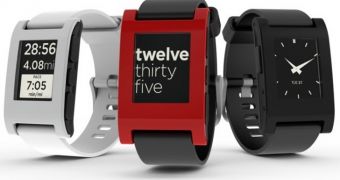Parkinson's Disease, also known as idiopathic or primary parkinsonism, hypokinetic rigid syndrome/HRS, or paralysis agitans, is a degenerative disorder of the central nervous system. Intel has decided to help cure it, or at least track those suffering from it.
In the bodies of people suffering from Parkinson's disease, dopamine-generating cells die in a certain region of the midbrain, called substantia nigra. No one knows why the cells die, just that they do.
The disease starts with movement-related problems (shaking, rigidity, slowness) and walking difficulties, and then expands to thinking and behavior.
Intel doesn't have any new ideas on finding a cure. However, it does believe that wearable gadgets can help monitor patterns and pick up symptoms.
You may or may not know that Intel's former CEO (Chief Executive Officer) Andy Grove was diagnosed with Parkinson's Disease back in 2000. The man later joined the Fox Foundation and soon became an advisor and major donor (he donated a $40 million / €30 million part of his estate even).
Fast forward to 2014, and now Intel itself has entered a partnership with the Michael J. Fox Foundation for Parkinson's Research, whose purpose is to track and analyze Parkinson's patients using wearable devices. They don't even need to be smartwatches, but even fitness bands and headsets, or even smaller gadgets (like, say, rings).
Intel and the Michael J. Fox Foundation intend to create an app that will allow patients to record how they feel, log medication they take, etc.
This, as well as automatically tracked data, will lead to 1 GB of information per device, per day, which would, presumably, be downloaded wirelessly every evening or while recharging at night.
There has already been a test run of the plan. Intel and the foundation used 16 patients and nine volunteers that were part of a control group.
All of them wore Pebble watches for four days and used them to record tremors, sleep patterns, gait, balance (or lack thereof). Intel expects the app to record 300 observations per second by the time the program is ready to actually launch.
A version of the app should be ready by the end of the year, and a study on the use of wearable devices for this purpose will be released around the same time. Presumably, the Parkinson's tracker app will work with any smartwatch, smart headset, or other wearable electronic with Android Wear or iOS.

 14 DAY TRIAL //
14 DAY TRIAL // 